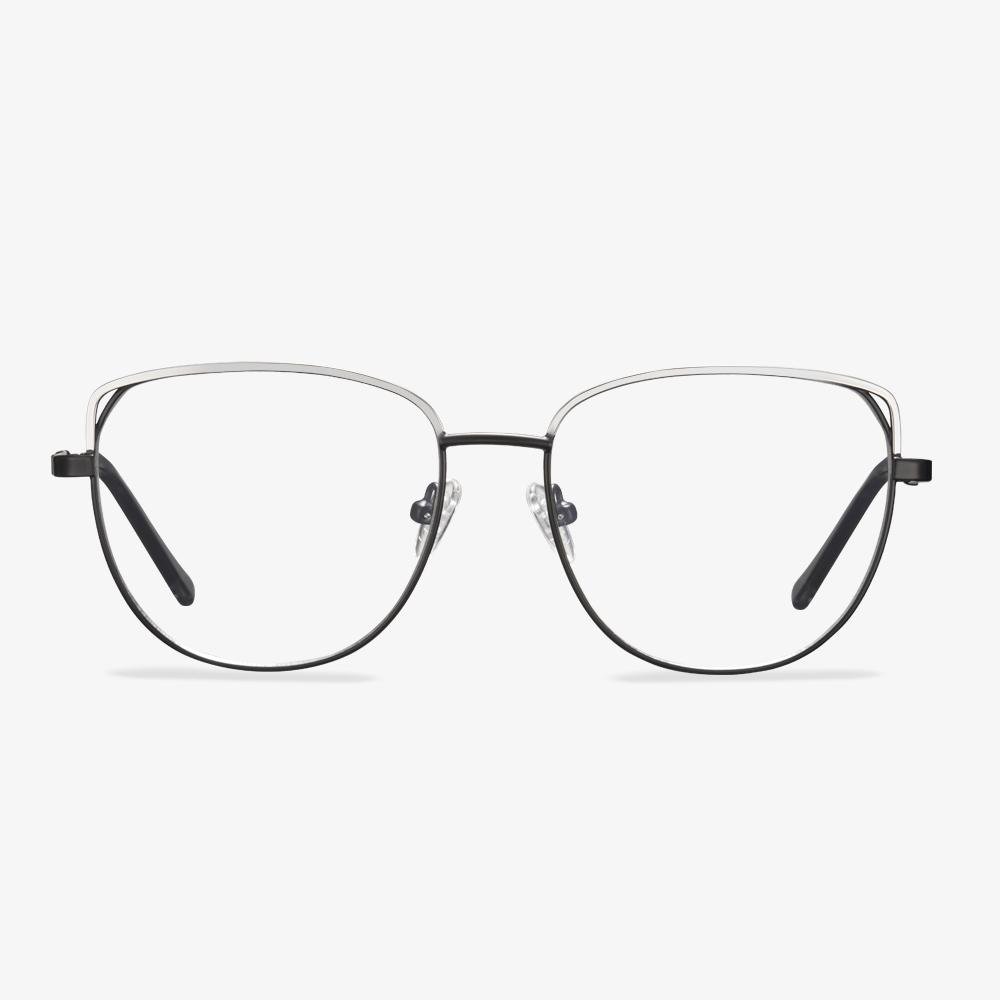Advantages of Metal Frames
The metal frame of eyeglasses conforms to the use performance of the frame. They need the material to have high fracture strength, enough plasticity, toughness, and good elasticity. And after the disappearance of the external force, they can restore to the original shape. This is the regular demand for the high elasticity of the metal frame. They must be able to withstand the atmosphere and human sweat daily corrosion. Usually, the corrosion resistance of pure titanium eyewear will be better than other eyewear. Some glasses will have a variety of wonderful grinding designs, and the material must have high plasticity.
Choose the right clear sunglasses for your face shape.
A clear eyeglass frame suits the person of different face shapes according to different shapes. For example, a heart-shaped face suits the clearest eyeglass frame, and a square face suits an elliptical transparent eyeglass frame. A round face suits the clear eyeglass frame with an outline. The long face suits the clear eyeglass frame with some width and so on. There are many kinds of clear frames, like oval, round, square frames, and so on.
When choosing clear frames, be careful to choose one that fits the shape of your face. Oval and the round clear frame are more suitable for heart-shaped faces, square faces, and long faces. People with round faces should avoid large frames, dark frames, and wide edges, and don't wear round or square frames.
The refractive index of lens
Refraction law is discovered by Dutch mathematician Snell.It is the law that determines the direction of refracted light in the phenomenon of light refraction. When the light from the first medium (refractive index N1) into the second medium (refractive index N2), part of the light from the first medium into the second medium at the smooth interface will be refracted. The index of refraction is the ratio of the speed at which light travels in a vacuum to the speed at which light travels in the medium. For glasses lenses, the higher the refractive index, the thinner the lens, that is, the lens with the same center thickness and the same degree, the lens with the higher refractive index has thinner edges than the lens with the lower refractive index of the same material.
The design evolution of progressive lenses
Spherical and aspheric designs
The design of the front surface of the far-use area of the early progressive lens is similar to that of the ordinary spherical single vision lenses, so it is called a spherical progressive lens. Since 1974, the front surface of the far-use region of the lens is designed to be aspheric by designers, which not only reduces the peripheral aberration but makes the lens thinner, lighter, and less powerful.
Hard and soft design
For hard design, the channel is short, and the gradient is large. The near-use area position is high. The effective visual area of remote and near-use areas was larger. Peripheral astigmatism is relatively concentrated. Because surrounding astigmatism increases rapidly and the distribution is dense, the curve effect is more obvious. The gradient area is narrow. It is more difficult and takes longer for wearers to adapt.
Lenses with soft designs have slower gradients, longer gradients, and wider gradients. The angle of rotation of the eye from the far area to the near area is greater. It's easier to get used to. Compared with the hard design, the effective visual area of the far and near use areas is smaller, and the location of the near use area is lower.
Single, diverse, and individualized design
Initially, the progressive lenses used a single design, in which each basic curve was scaled equally and a luminosity combination was added within the range of its semi-finished lens blanks. The steepest base curve uses the same lens design as the flattest base curve. Lenses designers quickly realized that the overall performance of the lens could be improved by microcustomizing the lens design, leading to progressive lenses with multiple designs. This kind of design is called diverse design. By the mid-1990s, there was the emergence of individualized lens designs. In addition to using different gradients, these first individualized lens designs used steeper baseline curves with a slightly larger approach area to compensate for increased magnification and reduced field of view.
Symmetrical and asymmetric design
There is no difference between the left and right eyes in the symmetrical design of progressive lenses. As the eyes turn inward when they see near objects, the gradual gradient area gradually tilts to the nasal side from top to bottom, so the left/right progressive lenses should be rotated clockwise/counterclockwise respectively during processing. An asymptotic lens with left and right eye divisions is called an asymmetric design. The gradient is gradually and moderately inclined to the nasal side from top to bottom. The refractive force, astigmatism, and vertical prism of the two sides of the left and right gradient of the asymmetric design lenses are basically similar. At the same time, considering the characteristics of eye movement parameters in binocular vision, the peripheral aberrations of the corresponding positions of the left and right lenses were appropriately balanced to improve the visual effect of the wearer.
How to buy contact lenses online?
Choose the right contact lens for your situation. Base arc and degree need to be added in the hospital or optician shop to determine. Try not to buy according to the framed degree. Some businesses claim to have the lenses having South Korea's silicone hydrogel, with annual throwing. They are not to be believed, because the material characteristics of the silicon hydrogel are not capable of making long-time discarded type lenses. There are a lot of things to pay attention to in order to properly wear contact lenses. For example, a medical optometry sheet is the premise of attention. Each pair of contact lenses is marked on the package of the basic arc, diameter, water content, diopter, and other parameters. Only according to the optometry sheet, you can choose the correct basic arc, diameter, and diopter. At the same time, there is a certain distance between the glasses and the cornea.
The advantages of contact lenses
Contact lenses are worn directly over the eye. Contact lenses are tightly attached to the surface of the eye and can always follow the eye, so you can maintain the same open field of vision like a normal person. You can participate in sports and outdoor activities without worrying about your glasses falling off or breaking. You can even use colored contact lenses to change the color of your eyes. Some girls, in particular, can make their eyes look bigger and more beautiful with the help of various color contacts.
Which kind of lens can correct myopia?
Myopia is corrected by glasses with concave lenses, which are the thinnest in the center and thicker at the edges. The strength of the lens used to improve myopia is measured in diopter (D). The prescription for myopic glasses always begins with a minus sign. The higher the magnification of the lens, the better the effect of correcting myopia. High refractive index lenses are usually recommended to correct myopia with a diopter greater than -3.00. The lenses are thinner and lighter than regular plastic lenses, making them more attractive and comfortable. At the same time, an anti-reflective coating is strongly recommended for the correction of myopia lenses. The augmented reality coating eliminates scattered reflections in the lenses, making them look thinner and more attractive.











































